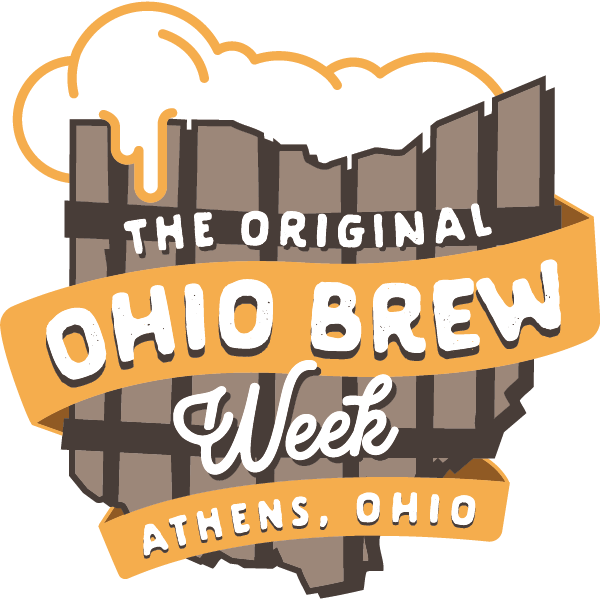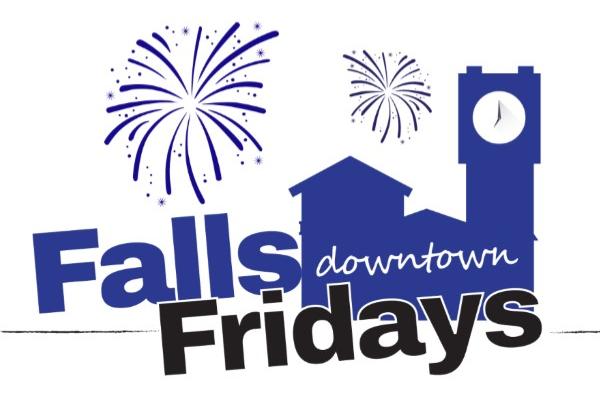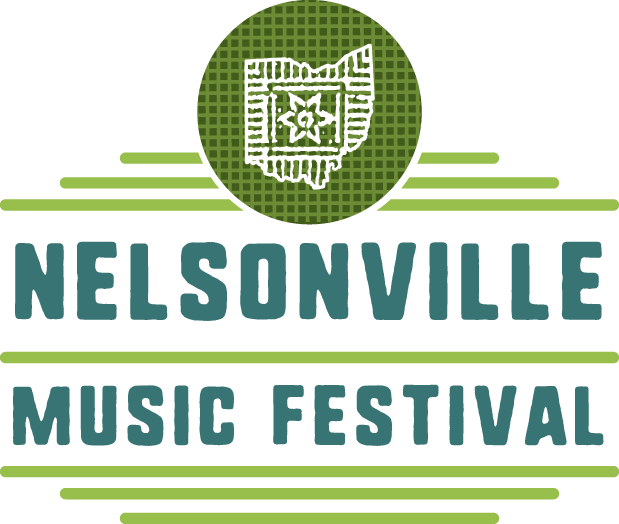By Matt Anthony - Summit FM Digital Media Specialist
All the small things
True care, truth brings.
- “All The Small Things” – blink-182
What do you do once the big event is over? Your daughter is finally married. You eventually received the promotion that you deserve. (‘overdue’, as it is!) You’re back from that amazing 10-day vacation. The Black Keys show is over and you’re driving home. Or…that offer you put in on eBay actually did make you the highest bidder!
Now what?
If Facebook has taught us anything, it’s that we have full, unadulterated license to share THE most captivating, joyous events that our lives can muster. In fact, there is tacit approval from the online community to boast until our heart’s content. To spend any time scrolling through your feed is to flex the tendons in your mouse-hand as you click ‘like’ and heart emojis until fatigue makes you shut the screen on your laptop.
But what happens next?
Master Po: Close your eyes. What do you hear?
Young Caine: I hear the water, I hear the birds.
Master Po: Do you hear your own heartbeat?
Young Caine: No.
Master Po: Do you hear the grasshopper that is at your feet?
Young Caine [looking down and seeing the insect] Old man, how is it that you hear these things?
Master Po: Young man, how is it that you do not?
- Kung Fu (TV series)/“The Way of the Tiger, The Sign of the Dragon” - 1972
Donna and I were walking on the Freedom Trail last week in Tallmadge. It was a beautiful day, and it was a busy day. The trail was packed with runners, walkers, recumbent bicyclists, skateboarders, and lots of dogs. Somehow, though, amongst the cacophony, a gentle breeze accelerated briefly and rattled the tops of the trees. They nudged up against each other like wind-chimes, a chorused brushing-together of swishes and swooshes. I stopped and closed my eyes.
“What’s wrong?” Donna asked.
I could feel myself smiling. “Nothing at all,” I replied.
It was the antidote to the tumult of the daily grind. A miniscule, miracle. Like hearing a train whistle as you are about to fall asleep. Like gawking at the way the sunset sneaks through a bedroom window at the Golden Hour, and you fumble with your camera trying to capture it. Or, for me, walking up the steps from the garage after a long day of work and smelling those simple peanut-butter cookies that Donna still makes for me.
On the gratitude-spectrum, these microscopic events flutter in, do their mystical work, and evaporate. And these are only the ones that we notice! While it’s very challenging, I’m doing my level-best to be open to the presence of the ones that, sadly, I miss.
By Dave Swanson - Summit FM Contributor
Emmylou Harris is an American treasure. Her full tally of contributions to American music is “real, and spectacular,” to quote a phrase. In love with music since childhood, it seemed like destiny she would make that path her home throughout life. Her interest led her into the folk music world of the 1960s. An Army brat, her family ended up in Virginia, by way of Alabama and North Carolina. With the desire for a life in music, in 1967 she ended up in Greenwich Village, folk music's center of the era, and by 1969, she had a manager and her first record deal. Her debut album, ‘Gliding Bird,' was released on the Jubilee label, and sank without a trace, once the label folded.
By this time she was married and with her first child, she started wondering if a life in music was meant to be, it was then fate intervened when she crossed paths with Gram Parsons, who had left behind not only a stint with The Byrds, but with his own Flying Burrito Brothers as well. The country rock pioneer was looking to establish himself as a solo artist, and upon meeting Emmylou, knew he had found his musical soulmate.
The duo recorded two albums together, to great critical acclaim, then Gram succumbed to drug addiction, and Harris was on her own. She had signed a deal with Warner Brothers Records and had established herself as a vocal talent far above the usual. From 1975 through 1993 she issued several albums and continued to command respect from fellow musicians and fans for her vocal abilities. By the mid-90s, however, there was little demand for her brand of country. Wanting to try something new, she was teamed up with hip producer Daniel Lanois, who had his hands on countless 'cool' records of a variety of styles.
Working with everyone from Canadian synth poppers Martha and the Muffins, and Nash The Slash, to legends like Brian Eno, Bob Dylan, and Peter Gabriel, as well as mega hits with U2. His production style was very vast and cinematic, and the thought of what he would do with the sound of Emmylou was intriguing to say the least. One listen to 1995's 'Wrecking Ball' and you know it was a perfect pairing. His spacious warmth added an almost surreal element to her roots conscious approach.
With songs by Lanois and Harris, she also delivered material from Bob Dylan, Steve Earle, Julie Miller, and Lucinda Williams, it all added up to one of her most solid efforts, and though most of the songs were from outside writers, she truly made them her own. One listen to her take on the Jimi Hendrix classic 'May This Be Love,' or the way she transforms Neil Young's 'Wrecking Ball' into her own space in time, tells your ears all they need to know.
The album scored heavy praise from critics around the world, likening it to her own 'American Recordings,' the Rick Rubin produced album that exposed Johnny Cash to a new generation of fans and evaluation. Despite winning a Grammy for 'Best Contemporary Folk Album,' 'Wrecking Ball' failed to set the cash registers alight, barely breaking into the U.S. Top 100. It did considerably better in Europe, even scoring a No. 1 on the UK country charts.
With a vast catalog and colorful musical history, Emmylou Harris remains one of the most loved and respected voices in country, roots, Americana, whatever you wish to call it. From her duets with Gram Parsons, and her own solo catalog from the 1970s, to 'Wrecking Ball,' and the even more experimental 'Red Dirt Girl,' in 2000, she has continued to define and re-define her sound. Much like this album, Emmylou is an essential artist!
By Dave Swanson - Summit FM Contributor
The band behind this week’s ‘Essential’ album, partially defined the path of early 80s guitar-based music, in an era where synthesizers had taken over. R.E.M. had their own ideas about where music in the new decade should be headed. Without taking one thing away from their entire, glorious discography, there is an argument to be made for the first chapter in the R.E.M. fables as being their best. The run of records from 'Chronic Town,’ in 1982, through 'Document,' in 1987, is pretty hard to beat. Over the course of those 6 years, R.E.M. stated their case, delivered the goods, and brought a soundtrack to an unsuspecting music world. Call it 'college rock,' 'alternative,' or whatever you like, somewhere between the influences of Wire, Television, the Byrds, and Moby Grape, the jangle ascending glory of R.E.M. came to light.
Their debut single, 'Radio Free Europe' was issued on the Hibtone label, in 1981, making college radio take notice, followed by IRS Records snapping them up to issue the EP, 'Chronic Town.' Their proper debut full length, 'Murmur,' followed in 1983, and with it, swarms of young, enthusiastic fans and rock critics, hunting for more and more accolades to heap upon this quartet from Athens, Georgia. By 1984, the little world of 'college rock' was bursting at the seams with bands like Husker Du, The Replacements, X, The Bangles, and many more, all upping the ante with new releases. R.E.M. stepped up to the plate and knocked it out of the park with 'Reckoning' that year. 2024 marks its 40th anniversary!
From the first jangle that kicks off 'Harbourocat' to the last surging chord of 'Little America' it was clear R.E.M. had rapidly become more focused than they were on the classic debut, 'Murmur.' It was the same team of Mitch Easter and Don Dixon, who helped the band develop its sound and style, that was quickly becoming a signature of not only their own, but of many an up-and-coming band trying to go for that sharp, jangly guitar sound that was firmly melodic pop, but with a unique, less obvious take on the genre. ‘Reckoning’ brought a sharper edge in songwriting, performance, and production.
'Don't Go Back To Rockville,' and 'South Central Rain' were both issued as singles, but made no dent, the latter barely scraping into the Top 100. That being said, both songs, along with 'Pretty Persuasion,' 'Second Guessing,' and '7 Chinese Brothers,' found a place on college radio charts, and helped R.E.M. gain more ground. The album itself made it up to No. 27. Self-assured yet full of wide eyed wonder, it captures the band at a genuine peak. This was rock and roll to be sure, but seemed a world away from the likes of Motley Crue, Ratt, and Quiet Riot, let alone Cyndi Lauper, Prince, or Duran Duran, and yet another world away from 'Thriller,' all ruling the commercial airwaves at the time. At that moment, R.E.M. were arguably kings of the underground, but getting too big for that circle. While many more classics would follow over the years, 'Reckoning' was certainly an early high-water mark, one that still rings out some four decades later.
By Dave Swanson - Summit FM Contributor
The Beatles story is a legend, a living legend, a legend that will live after lots of other living legends have died. Umm, oh wait, that's the Rutles. The Beatles were a pop group from Liverpool, England. Formed in the early 1960s, they would eventually take over the hearts, minds, and souls of an entire generation, and then some. You know, The Beatles!!
Anyway, back to the story at hand. By 1965 The Beatles had released four albums (though the American market would stretch that to eight), each on a significant progression from the previous. The primal urgency of 1963's 'Please Please Me' gave way to a more self-assured sound on 'With The Beatles,' released a mere 8 months later. By the summer of 1964, they were a worldwide phenomenon, and had made their first film, 'A Hard Days Night,' which would also serve as the band’s third LP. On that album, everything came into focus. All songs were self-penned, no covers, and it remains one of their finest, and most solid, albums of their catalog. Another album, 'Beatles For Sale' was on the streets by years' end. It was as much a step forward as it was a step backwards, with six of the fourteen tracks being early rock and roll favorites of the band. That being said, the new Lennon/McCartney songs on the album showed their creative spark was in constant forward motion.
All of which lands us in 1965 and the band's fifth album, and soundtrack to a second film, 'Help!,' and much like the film, the album itself was in full color sonically. When the album was issued in America, it was chopped drastically so as to include incidental music from the film, whereas the original UK LP was a huge step forward. It is, however, interesting to note that the U.S. version of the album contained the first use of a sitar on a Beatles album, granted, as part of the film score, but still worth noting, considering how large that instrument would loom in Beatles lore.
The writing of Lennon and McCartney was quite simply, brilliant throughout. 'You've Got To Hide Your Love Away,' 'Ticket To Ride,' 'I've Just Seen A Face,' 'You're Gonna Lose That Girl,’ and, of course the title song, are all first class Beatles songs. Add to that two ace George songs, 'I Need You' and 'You Like Me Too Much' and a full throttle version of Larry Williams' 'Dizzy Miss Lizzy' ends the album with somewhat of a nod to their roots, from which they were moving on.
From start to end, it stands as one of the band's most solid all around albums. For decades many people have linked 'Rubber Soul' and 'Revolver' as hand in hand albums, in many ways it's actually 'Help!' and 'Rubber Soul' which link up perfectly. The jangling guitars, folk rock inspiration, and more sophisticated arrangements on both lead the way. It’s no surprise then, that the U.S. version of 'Rubber Soul' nabbed a few of the songs from the UK 'Help!' seamlessly. The McCartney signature of 'Yesterday' is also here as is Ringo's take on Buck Owens 'Act Naturally' adding country rock to the Fabs’ repertoire very early on.
'Help!' is truly an essential album, and not simply a great Beatles album. It may be taken for granted as historical, but we must pause to note once again the speed at which The Beatles (and most other bands of the 1960s) operated. It was incredible, insane, and inspirational. The recording of the 'Help!' album began in February of 1965, and was on the streets by early August with 'Rubber Soul' just around the corner, released in December of the same year, and 'Revolver' on shelves eight months later. And remember, we're not talking about rushed 'product' of some generic nature, we're talking about THE BEATLES, and landmark recorded works.
The Beatles may still be omnipresent in 2024, but one thing we can't afford is to take their existence for granted. They were, and remain, a once in a lifetime event, one that changed not only the world of music, but the world in general. Never before, and never again.
By Matt Anthony - Summit FM Digital Media Specialist
I could see it on the horizon. A dark, sinister atmospheric ‘lump’ that was advancing, moving quickly towards me. There was no way I was equipped to out-run it. I had been warned of this day. But how was it possible? That pristine Saturday afternoon had offered unparalleled serenity. Just me, a Jeff Buckley tune dancing inside my noggin, abundant sunshine, and the sexy, motorized rumble of a Triumph Bonneville underneath my leather-clad corpus.
But there it was. It looked like the ‘Darth Vader’ of cloud formations. I realized that I could not turn around. It would do no good, anyway, based on the speed of its movement. And since I was unfamiliar with the roadways in that stretch of eastern Ohio, I felt uncomfortable veering off on to a country road.
I had to face the music.
Riding a motorcycle in inclement weather teaches you about your limitations. It makes you respect that natural order of things. It focuses attention on objects that, in a car, would seem non-existent, like maintaining balance and safety through the build-up of pebbles while cornering. Most importantly, it places your definition of ‘riding defensive’ at the top of the pyramid.
It also introduces you to sounds and feelings that reek of unfamiliarity: large drops of precipitation slamming into a plastic face-shield, a loud, wet chorus of 18 tires separating sheaths of water as a truck invades your space going in the opposite direction, and saturated riding gloves and shins, helpless against a cloud-burst’s onslaught.
To this day, I’m flabbergasted at the thought of the speed of this natural phenomenon, and how quickly it enveloped me that day. I would encounter multiple instances like that one later in my riding career. But I’m equally as amazed at my reaction: sheer panic, then resignation, then outright clarity.
Do what you were taught.
“Hey, world, you know you gotta put up a fight.”
- Michael Franti
Facing an adversity can make us grateful for the experience. We may not have asked for it. We may doubt our ability to weather it. And we may not even know if we’re capable of confronting these things, much less experiencing a victory. But an obstacle can be a path to some form of self-discovery that could make us aware of something about ourselves that we didn’t know was even there.
Losing 10 pounds. Finishing a course started long ago. Finally picking up that guitar. These can be daunting challenges that may cause us, time and time again, to shrug off the inclination to actually start the process.
For me, it was riding a motorcycle. I had always wanted to do it, but I was frightened, and I was constantly told that I couldn’t. But while living in St. Louis, I finally decided to sign up for a course. I struggled. I doubted myself. Heck, I even dropped a motorcycle during an exercise! But getting that certificate and driving home afterwards, with that feeling of satisfaction, was exceptionally gratifying.
I experienced the same feeling while stopping for a coffee after my dance with the dark cloud that day. I was intact. I was safe. I had utilized what I had been taught, and I weathered something that I didn’t think was possible. It felt gratifying to say that I had come through on the other side.
But there’s a fundamental truism to always keep in mind: The clouds never stop. While I no longer ride, the confrontations continue. Riding through a torrential storm with nothing or nobody to protect you has been replaced lately with confronting Donna’s cancer, navigating the Alzheimer’s journey, and trying to come to terms with a life and whether it’s been well-lived. Who will we be when the dark cloud leaves? What will we have learned? Can we find gratitude deep inside the experience, knowing that one lesson learned will lead to yet another that needs addressed? Resigning ourselves to the fact, and finding comfort somewhere in it, makes gratitude that much more magnified.
Crank up the Summit FM and hit the road this summer! You can find The Summit at many events and concerts, all over Northeast Ohio, Athens, and beyond!
Click the logos below to find out more about the wide-ranging events from our community partners:
By Dave Swanson - Summit FM Contributor
To have your debut album not only garner vast critical acclaim, but to also connect with a huge audience is truly something special. The 1989 debut from Tracy Chapman not only brought in rave reviews, three Grammy wins, and four other nominations, but hit #1 in nine countries, and No. 2 in four others, ultimately selling multi-platinum across the world. Not bad for this Cleveland, Ohio born singer/songwriter, who was a mere 24 years old at the time.
In 1989, in the midst of a shallow and sparkly world of pop and metal, Tracy Chapman's debut album seemed like an artifact from a different planet, let alone a different time. Her mixture of folk, reggae, blues, and soul, within the pop format, made Chapman stand out even more. It was because of this distance from the mainstream that people noticed in a big way.
The song that initially got attention focused on her by the record companies was 'Talkin' About A Revolution,' but as we know, it was 'Fast Car,' that when released as the album's first single, would shine the spotlight firmly upon her. The entire album is filled with such mini classics, gems that transcend the time and place they were made, catchy enough to grab an ear, but substantial enough to hold attention. For many, the thought was Tracy was the new social and political voice on the streets, but she saw it differently. "People refer to me as being a protest singer, being revolutionary and all," she told NPR in 1988, "I know the kind of music I do is different than popular music on the radio today, and it’s not new for a black person. Black people have a history of folk music."
Because of, or perhaps in spite of, this take, it certainly helped Chapman gain ground. Songs like 'Mountains O' Things,' and 'Behind The Wall' tackled topics and turned heads lyrically, while the sparse and sometimes haunting musical approach held it all in place. Singing about homelessness, domestic violence, the political stance of America, and a hopeful call for change, may have clashed with the 'nothing but a good time' party going on elsewhere, but it stood tall on its own.
"I think many of the songs I've written, there's an element of hope in there," Chapman told MTV back in 1988. "In a sense I guess it's a double edged sword, let's look at all the things that might be unpleasant, but we have to look at them if we’re going to come up with solutions to these problems, and to do that, you have to hope that things can get better."
The album was produced by the highly respected David Kershenbaum, who was behind many significant records by artists such as Duran Duran, Joe Jackson, Bryan Adams, Supertramp, Cat Stevens, Elkie Brooks, and Tori Amos. In speaking with Rolling Stone at the time of release, Kershenbaum said, "I wanted to make sure that she was in front, vocally and thematically, and that everything was built around her." He was betting that there were enough music fans craving something of more substance and less glitz.
"There was a set of ideas that we wanted to communicate, and we felt if we were truthful and loyal to those ideas, then people would pick up on the emotion and the lyrical content that was there." Kershenbaum's instincts were correct, as the album turned out to be the right album at the right moment.
She definitely touched a nerve with the public on that first album, which lead to a solid twenty year career, mostly dormant since her last album in 2008. Only recently, with the chart topping cover of 'Fast Car,' by current country sensation Luke Combs, is she back in the spotlight. His version hitting #1 caused her to become the first Black woman to score a country number one with a solo composition, while at the 57th Annual CMA's in 2023, she also became the first Black woman to ever take home a CMA Award, winning ‘Song of the Year’ for 'Fast Car.' She later made a public re-emergence when she appeared on the 66th Annual Grammy Awards, earlier this year, to join Combs on 'Fast Car.'
“It’s hard to be a commentator on your own work, and try to analyze what you’ve written, when sometimes you don’t even know what you’ve done,” she told Spin. “That’s why I write songs and I don’t write books. People always want to know about the person that writes, and the easiest thing to do is assume that they write about themselves, and that you can gain insight into what the writer thinks and feels. But that’s not necessarily true. In songs, you take on different personas and different characters, and try and put yourself in their place. Plus, I think that if you go about explaining everything about a song, it’s gone.”
Even though Tracy Chapman has had a healthy career in music, her self-titled debut remains the cornerstone of her catalog for many, and it’s easy to see why it remains essential.
L to R: Mrs. Celeste Wagner, Director of Bands, Barberton High School - Tommy Bruno, General Manager, The Summit FM - Mr. Henry Muren, Principal, Barberton High School
The Summit FM’s Marilyn Stroud Music Alive Program is proud to announce a new partnership with Barberton City Schools. This unique “up-cycling” initiative will provide Barberton students increased access to refurbished musical instruments and music education opportunities.
"We are thrilled to welcome Barberton City Schools as the newest member of our public radio station’s popular Music Alive program," said Tommy Bruno, General Manager at The Summit FM. "Through this collaboration, we aim to inspire a lifelong love of music and ignite creativity among Barberton's students."
Launched in 2008 by The Summit FM (91.3 FM Akron-Canton), the Marilyn Stroud Music Alive Program has donated hundreds of refurbished instruments to regional public schools. As a nonprofit public radio station, The Summit FM believes every child deserves to explore their musical talents and experience the joy of creating music.
"Music education plays a vital role in a well-rounded curriculum," said Jeffrey Ramntyz, Superintendent of Barberton City Schools. "We are grateful for the Summit FM's generosity and commitment to empowering our students through the gift of music."
Barberton City Schools joins other partners such as Akron, Canton, Struthers-Youngstown, and Athens to benefit from the Music Alive program. The Summit FM will work closely with Barberton's staff to coordinate instrument deliveries.
For more information about the Music Alive program, please visit www.summitfm.org/musicalive or contact Tommy Bruno at tommy@thesummit.fm
By Dave Swanson - Summit FM Contributor
Graham Parker has lived a life of music. From his teenage years, following a beat group dream, and on through to gracing the world stage with his own brand of rock and roll, which he merged with soul, folk, and a smart pop sensibility. Parker hit the ground running with his debut LP, 'Howlin' Wind,' in 1976. Produced by Nick Lowe, 'Howlin Wind' was a perfect introduction to the world of Parker and his songs. 'Nothing's Gonna Pull Us Apart,' 'Back To Schooldays,' and 'Don't Ask Me Questions,' to name a few, made people take notice there was a new force to be heard.
Soulful yet savage, Parker was the first kid in line, before Costello, Jackson, and the rest. Melding a bit of Van Morrison with Bob Dylan and his own personal venom, he quickly developed his trademark sound. He would follow that with the slightly more polished, Mutt Lange produced, 'Heat Treatment,' a mere few months later. Two landmark albums under his belt by the end of 1976, and the 'revolution' that was punk rock/new wave had yet to get into gear. Not that GP was 'punk rock,' but like many of the era, that had little to do with the grandiose candelabras and conceptual works of the day, he shared a back to basics sensibility. Graham called Nick Lowe back for album three, 'Stick To Me,' followed by the gritty live album, 'The Parkerilla.'
By 1979, the lay of the land was different in the few years since Parker wandered into the landscape, meaning, the world was catching up with the style GP was laying down, which should have made 1979 the year of Mr. Parker. In some ways, it was. The release of 'Squeezing Out Sparks,' in March of 1979, was perfectly timed. Chock full of classics delivered with a crash, bang, and wallop simply made for the era, Parker was suddenly in the spotlight.
It's not a stretch to claim that it is a perfect album. From the first chord of 'Discovering Japan,' to the final note of 'Don't Get Excited,' the album had everything going for it. The sharp production, by the legendary Jack Nitzsche, was a perfect fit for the first rate songs within. With backing by his loyal, and very rocking band, The Rumour, it honestly didn't get much better. 'Local Girls' was the hit that never was, while 'Nobody Hurts You,' 'Saturday Nite Is Dead,' ‘Passion Is No Ordinary Word,' and 'Love Gets You Twisted,' are all classics that prove Mr. Parker should be on that elusive Mount Rushmore of unsung heroes of rock and roll!
A modest hit in the UK, hitting number 18, 'Squeezing Out Sparks' actually hit the U.S. Top 40, making it, along with the follow-up 'The Up Escalator,' his highest charting U.S. albums. While it never made him a household name, it certainly gained him many new fans, and could easily be held up as Essential! Now, go turn it up and enjoy!


















